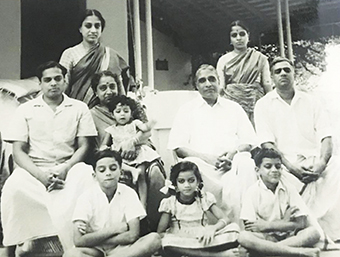Coimbatore – The gift of Noyyal is the home to a lot of heritage. The Palakkad gap has blessed the city with salubrious weather. Thanks to this route a number of international travelers have visited the region. The territory was thus able to break all the barriers and move ahead. Let us celebrate the heritage of Coimbatore by revisiting it on this occasion.
The two tiered clock tower is a fine piece of heritage. This century old building which houses the clock tower is the ‘autograph’ of Coimbatore. Yes, the Tamilnadu Agricultural University building which houses the double decker clock is recognized as the ‘symbol’ of city because of the efforts of INTACH, Coimbatore Chapter. INTACH has been at the forefront of heritage awareness for a long time now. The ‘Kongunad Heritage Honours’ was a unique programme. All the old private buildings were recognized and given a citation as part of the programme. A Heritage Cookery Contest, Heritage Treasure Hunt etc., were super duper hit events by INTACH in Coimbatore.
Crafts Council of Tamilnadu has also done its best with regard to the heritage of this region. They have documented the good work of the florists of this part of the country. The documentation was brought out as a book and it was titled ‘Pushpanjal’. This wonderful book has captured our floral traditions in the form of fine photographs. Jaya Meenakshisundaram has also documented the functional aesthetics in her book. The book on tattoos is also another seminal work from her side.
Heritage includes practices, rituals, festivals and celebrations. The Perur Patteeswarar Temple is home to old heritage. Perur is a fine heritage village found on the banks of River Noyyal. The old choultries, temple tank, ancient houses, water bodies in the neighbourhood, mutts like the Santhalinga Mutt along with their timeless practices backed by legends in the form of stories at Perur need a lot more attention. It is high time that everyone looks into this and does the needful.
The festivals and rituals of Perur need to be documented immediately. A full book on Perur is the need of the hour. Layers of history will have to be unraveled by the research scholars. It will be great if this taken up as a project by a group of people belonging to diverse backgrounds like religion, architecture, literature and ecology. Such a book will be most welcome and will pave a way for the preservation of Perur for posterity.
Coimbatore has a number old temples, icons and buildings. A heritage documentation of these assets are important. Institutions which are concerned with teaching history, architecture, tourism, literature and design should get together in this regard and do the needful. The food heritage of the region can be documented by the catering institutes which are found in a good number. Hoteliers should also be part of this exercise. Coimbatore is home to a lot of textile and jewellery heritage. This needs to be documented before it is too late. Organizations like the Coimbatore Jewellers Association and the Coimbatore Cloth Merchants Association should be involved in this work.
The city has a lot of old properties strewn all around. These properties are in the private and public domain. A number of these buildings are getting destroyed and larger ones are being constructed. This is done in order to house more people. Some of these buildings like the ‘Kudairai Vandi Court’ need to be preserved. Perhaps one of these old structures can be converted into a museum. The Police Museum has been a good project. A similar exercise can be undertaken.
Coimbatore is home to some fabulous town houses and bungalows. They were built in the later half of the nineteenth century and the earlier half of the twentieth century. These buildings are quickly being replaced by newer ones. It important that they are documented before being pulled down. The art deco bungalows of the region are fabulous and worthy of a book. The furniture, flooring and the designs of these legendary houses make them extremely unique. Kovai Kizhar C.M. Ramachandra Chettiar has spoken about four fabulous houses in his book on Coimbatore. One of the houses ‘Mahalakshmi Illam’ was the residence of Rao Bahadur A.T.Thiruvengadasami Mudaliar. Such houses can be made into heritage hotels or can be used to run designer or branded retail outlets.
Heritage walks, heritage design contests and heritage talks should be encouraged. The trade bodies and the administration should play a role in this. A model farm should show case old agricultural practices and this can perhaps be nurtured by the Tamilnadu Agricultural University. An ‘Agriculture Museum’ could be created in the university campus itself.
Heritage means fellowship, friendship, conservation and commerce. If we work towards preserving / restoring our man made and natural heritage the region will stay immortal. It will survive and will not be ‘excavated’ in the future. Coimbatore is the ecological capital of Tamilnadu and green NGOs like SIRUTHULI should be further encouraged to conserve and preserve. The literary, dance and music heritage of our state is very fresh in Coimbatore. A number of music and dance teachers are doing their best. They can be the catalysts for this documentation.
The story of the Coimbatore fort and the polygars of this region will be extremely interesting. We could collaborate with publications like http://www.livehistoryindia.com for this activity.
The heritage effort will require the energies of educational institutions, authorities, trade bodies, scholars, NGOs and enthusiasts. Coimbatore can really afford to document and preserve it heritage given the situation and opportunity. Hope this ‘World Heritage Day’ serves as a trigger for this marvelous initiative.
—Rajesh Govindarajulu
Celebrating Coimbatore’s Heritage On World Heritage Day




